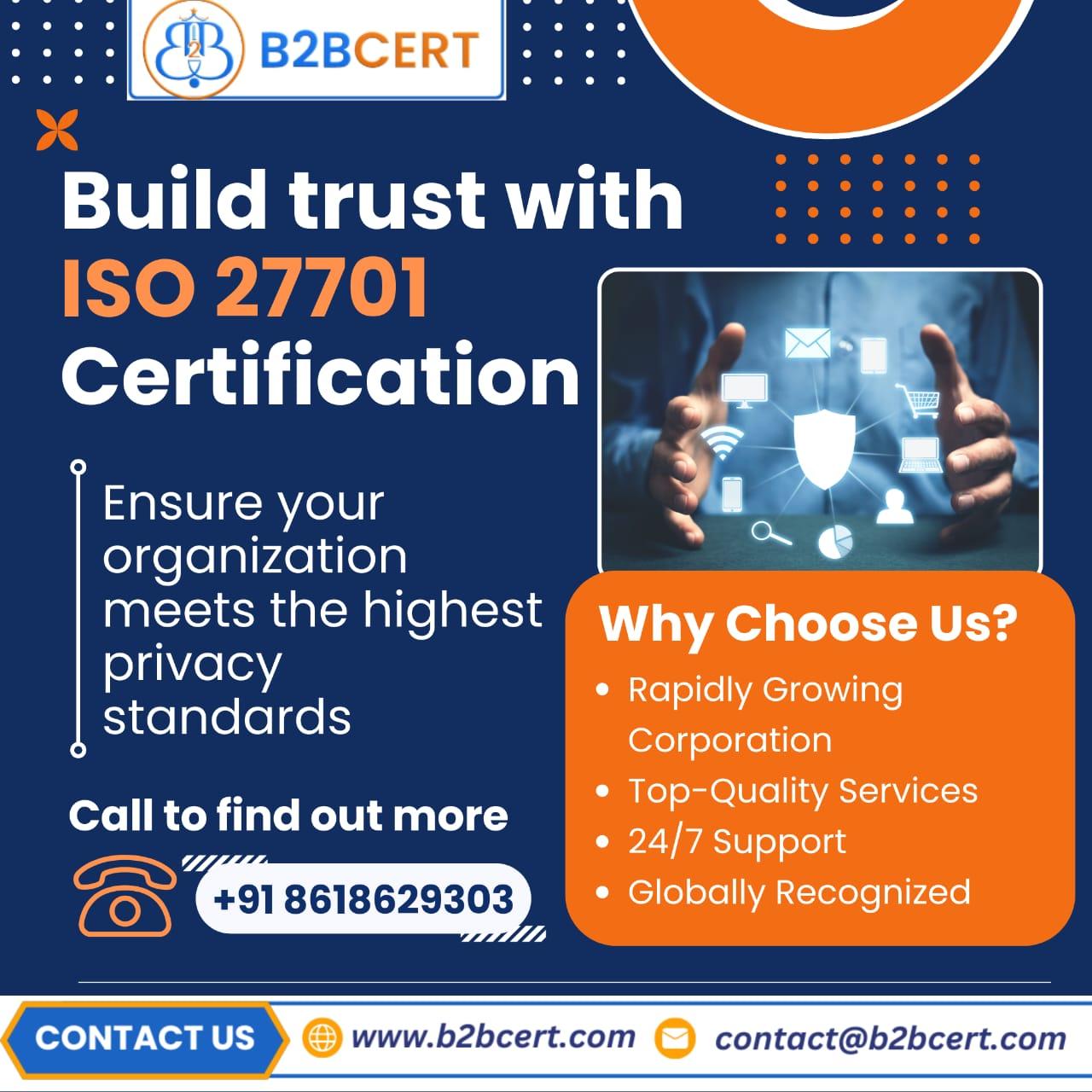The Statement of Applicability (SOA) is a crucial document in the implementation of any ISO management system standard, including ISO 27701 , the internationally recognized standard for Privacy Information Management Systems (PIMS). It serves as a roadmap for organizations, detailing which controls from the ISO 27701 framework are applicable to the organization's operations, and how these controls are implemented and managed. For businesses seeking ISO 27701 Certification in Dubai , understanding and preparing an SOA correctly is essential to ensure compliance, protect personal data, and achieve certification smoothly.
Understanding the Statement of Applicability (SOA)
In simple terms, the SOA is a comprehensive summary that outlines:
-
Which controls from ISO 27701 are relevant to the organization based on its risk assessment and privacy requirements.
-
The current status of each control , whether it is implemented, partially implemented, or not applicable.
-
Justifications for inclusion or exclusion of specific controls.
-
References to policies, procedures, and evidence that demonstrate the organization's compliance.
For organizations, the SOA acts as a bridge between theoretical requirements of the ISO 27701 standard and practical implementation measures. It is not merely a checklist—it’s a strategic tool that aligns privacy objectives with operational processes.
Importance of the SOA in ISO 27701
Preparing an SOA is vital for several reasons:
-
Clarity and Transparency: It provides a clear overview of which privacy controls are adopted and why, ensuring that stakeholders understand the organization’s privacy posture.
-
Risk-Based Approach: ISO 27701 emphasizes managing privacy risks. The SOA reflects the organization’s risk assessment decisions, ensuring controls are proportionate to identified risks.
-
Audit Readiness: Auditors reviewing the ISO 27701 Certification in Dubai will rely heavily on the SOA to verify compliance with privacy and information security requirements.
-
Continuous Improvement: The SOA is a living document, helping organizations track control effectiveness and update them as privacy regulations evolve.
Steps to Prepare an SOA for ISO 27701
Preparing a Statement of Applicability requires a structured approach. Here are the key steps:
1. Conduct a Privacy Risk Assessment
Before deciding which controls to include, organizations must perform a privacy risk assessment. This involves identifying:
-
Personal data processed by the organization.
-
Privacy risks associated with processing this data.
-
Legal, regulatory, and contractual requirements relevant to personal data.
This assessment forms the foundation for determining which ISO 27701 controls are necessary.
2. Map ISO 27701 Controls to Organizational Needs
ISO 27701 extends ISO 27001 and ISO 27002 by introducing additional privacy-specific controls. These controls cover:
-
Data subject rights management
-
Consent management
-
Privacy policies
-
Pseudonymization and anonymization techniques
Each control should be evaluated for its relevance to your organization’s operations. Controls that do not apply must be justified in the SOA.
3. Document Control Implementation
For each applicable control, the SOA should detail:
-
Implementation status: fully implemented, partially implemented, or planned.
-
Reference to evidence: policies, procedures, records, or tools that demonstrate compliance.
-
Responsible party: individuals or teams accountable for maintaining the control.
4. Justify Non-Applicable Controls
Some controls may not be relevant due to the organization’s nature, size, or risk profile. It is essential to document the rationale for excluding these controls. Auditors expect these explanations to ensure that the exclusion does not compromise privacy compliance.
5. Review and Approve the SOA
Once the SOA is drafted, it should be reviewed by senior management and approved as an official organizational document. This step ensures alignment with business objectives and regulatory requirements.
6. Maintain and Update the SOA
Privacy risks and regulations evolve continuously. Organizations must treat the SOA as a living document , reviewing and updating it periodically to reflect changes in operations, legislation, or ISO 27701 requirements. This ongoing maintenance ensures sustained compliance and readiness for recertification audits.
Tips for Effective SOA Preparation
-
Engage Experts: Working with ISO 27701 Consultants in Dubai can help ensure that the SOA accurately reflects compliance obligations and best practices.
-
Integrate with ISMS: If the organization already has ISO 27001 controls in place, align ISO 27701 controls to avoid duplication and simplify management.
-
Use Clear Documentation: Maintain clarity by using tables or matrices to map controls, status, and references efficiently.
-
Train Staff: Ensure that employees responsible for privacy controls understand their roles, contributing to accurate documentation and effective control implementation.
Leveraging Professional Support
Achieving ISO 27701 Certification in Dubai requires precise documentation and robust control implementation. ISO 27701 Services in Dubai , including consultation, implementation support, and audit preparation, can streamline the SOA preparation process. Professional guidance ensures the SOA is comprehensive, audit-ready, and aligned with both international standards and local privacy regulations.
Conclusion
The Statement of Applicability is not just a regulatory requirement; it is a strategic tool that demonstrates an organization's commitment to privacy and data protection. A well-prepared SOA clarifies which ISO 27701 controls are relevant, documents their implementation, and supports ongoing compliance and improvement. For organizations aiming for ISO 27701 Certification in Dubai , investing in proper SOA preparation with the guidance of ISO 27701 Consultants in Dubai and leveraging specialized ISO 27701 Services in Dubai ensures a smooth certification process, enhances trust with stakeholders, and strengthens the organization's privacy framework.

